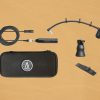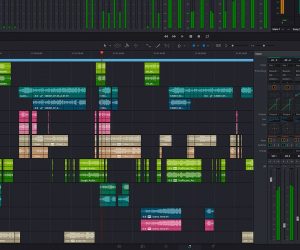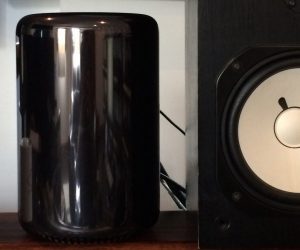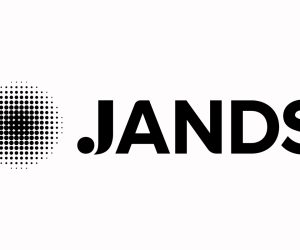
Blackmagic Buys Fairlight, Then Gives it Away
Aussie video titan, Blackmagic Design, has made a habit of buying expensive pro software and giving it away. Now you can get Fairlight free of charge.
Not many active musicians have touched stylus to CRT screen on an original Aussie-made Fairlight CMI. The effect of Fairlight’s ground-breaking sample-based computer music editor is more likely to be felt in modern software workstations — like Ableton Live. Fairlight didn’t become ubiquitous in the music production space, instead the company turned its focus to film and broadcast and made arguably the world’s best DAWs for those industries.
In keeping with its history of innovation and survival in changing markets, Fairlight has once again undergone a phoenix-like transformation to be reborn under the watchful eye of another famous Australian name — Blackmagic Design.
Blackmagic should be a familiar name to audio folk as the divide between audio and video is dissolving rapidly. It started modestly, making digital video I/O cards for editing systems like Final Cut Pro, and has grown into a juggernaut that dominates NAB — the world’s biggest broadcasting show — each year. As well as developing classy hardware, Blackmagic has been buying up software companies and giving away once exorbitantly-priced film studio software free of charge.
The first big purchase was Da Vinci, a company that made colour grading software and hardware. A system that cost six figures was rapidly re-engineered into a software-only, cross platform version called Resolve and released free of charge. A US$999 version had some additional features but the free version did everything most users needed. Within a few years the team had advanced Resolve’s editing functionality, added lots of finishing tools like title editors, and embraced audio and video plug-in support. Next to be snapped up was Fusion, one of the best VFX compositing tools. Again, within a short time a free and US$999 version hit the stunned market.
Naturally, when Fairlight offered its IP to the open market on the 22nd of July, 2016, Blackmagic took a look. A deal was announced on the 9th of September at the start of IBC and speculation ran hot over what Blackmagic would do with the audio company.
When you consider how quickly Blackmagic has grown into a complete one-stop shop for video production — including pro software, video conversion and live streaming hardware, even developing its own professional camera range — the pace of development at its competitors appears glacial by comparison. Still, the appearance of Fairlight inside Resolve at NAB 2017 stunned even seasoned post people like me. How did they manage to integrate a professional audio workstation into Resolve in six months?
To go behind the story of how two Aussie companies produced a mini miracle and to find out what it all means for existing Fairlight users, I spoke to Paul Saccone, Product Marketing Manager at Blackmagic Design: “The first thing we faced was getting the software across three platforms, as we were uniquely PC. I won’t go into details of what coding language we used but Fairlight’s small dedicated family of developers found themselves surrounded by Blackmagic’s big development team. Everyone was working collaboratively and basically online all day.”
AudioTechnology: It didn’t matter that Fairlight was in Sydney, and Blackmagic had teams working in Melbourne and Singapore?
BD: Wherever they might be. Blackmagic has tools that make this sort of collaboration possible. Immediately a target was set; to get Fairlight inside Resolve by NAB. From the purchase it took a couple of weeks to assess Fairlight’s IP. Choosing the architecture we would use to code across platforms took another month. By then it was October and NAB was just six months away. It was like, ‘Holy crap! How are we going to do this!’ What the team did was fabulous. Obviously it wasn’t release-ready software, but the amount of Fairlight software that went into the NAB release was extremely impressive.
AT: Blackmagic is calling it beta software and not pretending it’s the release version. I had to send a colleague in the US a copy of the Fairlight manual after he downloaded the first beta of Resolve and found very little info in its manual about the new Fairlight page.
BD: You can see the priorities. There were some more fundamental issues to be solved. For instance, when you looked at Fairlight software you saw one piece of software, but it actually consisted of modules, some of which — like FMC, the mixer control module — can be traced all the way back to the pre-2000 FAME mixing system. Over time bits were added to each module and they had to communicate back to the other modules. Certain ‘inconveniences’ that had built up in Fairlight software had to be solved. Porting all of it to Resolve would have taken months, so it was rebuilt from the ground up.
AT: Was it a chance to clear the decks and rewrite the software so it looks and functions like Fairlight but with fundamental low-level software changes?
BD: Exactly! Previously it was impossible to do clip-based audio key framing within Fairlight. We’ve also had to introduce the concept of audio FX rendering to Resolve. In the Fairlight world, user are able to perform 5.1 multi-bus mixing with over one hundred tracks, which would require 256GB of RAM if you used track-based and clip-based VST plug-ins without rendering.
There’s also multiple mains mixes in Fairlight Version 5. Not only bus to mains, but sub busses to multiple mains outputs, which is all important to different versioning.

AT: Will there still be a standalone Fairlight audio system or will existing Fairlight users have to learn to drive a video/audio finishing tool?
BD: There will be a high level of faithfulness to existing Fairlight users. A Fairlight user is going to be able to load up Resolve and go for it.
AT: For the first time ever it may be on a Mac or Linux computer?
BD: Yeah. Last night I was working on a doco to upload to YouTube. The titles and audio levels were not quite right, so I copied the project from the PC I was using onto my Mac laptop, went home and kept working on it. Resolve archive files include used media so they are so easy to move around.
AT: Are there any assurances you can give to Fairlight users worried old projects won’t open
in Resolve?
BD: There are already scripts and tools in the background that are going to be available for that. There has to be compatibility between existing DR2 projects and Resolve. As for legacy MFX3 projects? I don’t know. A third party could write translation software for that.
AT: What about existing hardware compatibility and plans for future control and mix hardware?
BD: You’re way down the line with future hardware. Those policies are a work in progress. There are many generations of Fairlight hardware that work with version five software — older USB- and Ethernet-based models. With Resolve the line has to be drawn somewhere. I don’t see USB controllers being supported. However, USB to Ethernet upgrade kits exist for some USB controllers like the Xynergi panels. At NAB, Fairlight ethernet controllers were working with Resolve and the keys to switch to the Resolve pages were on those controllers. Also, iCan is now even more integrated with the software. [iCan is a control protocol allowing Fairlight controllers to drive other editing applications like Adobe Premiere – Ed].
AT: So if I have Resolve and Premiere on my machine, the existing Fairlight controllers can drive both NLEs via iCan?
BD: Those are all still technical possibilities. How we will use that is a work in progress. The sky’s the limit, we’re very excited.
PROBLEMS RESOLVED
Having the purchasing power and market muscle of Blackmagic behind Fairlight is a big plus for users of the DAW. As an existing Fairlight customer the future looks very good. Blackmagic brings hardware expertise, an astonishing speed of development, and a cost effectiveness that sees a full Fairlight system inside Resolve for US$299. As a Resolve user as well, it means for the first time I can do both high-end picture and sound post in the one software app without clumsily transfering between picture and audio post via unreliable interchange formats like AAF or OMF. It solves one of the weakest parts of the video post-production workflow. Exciting times for post people.


























This is an unusually timed post, as this all happened in September 2016.